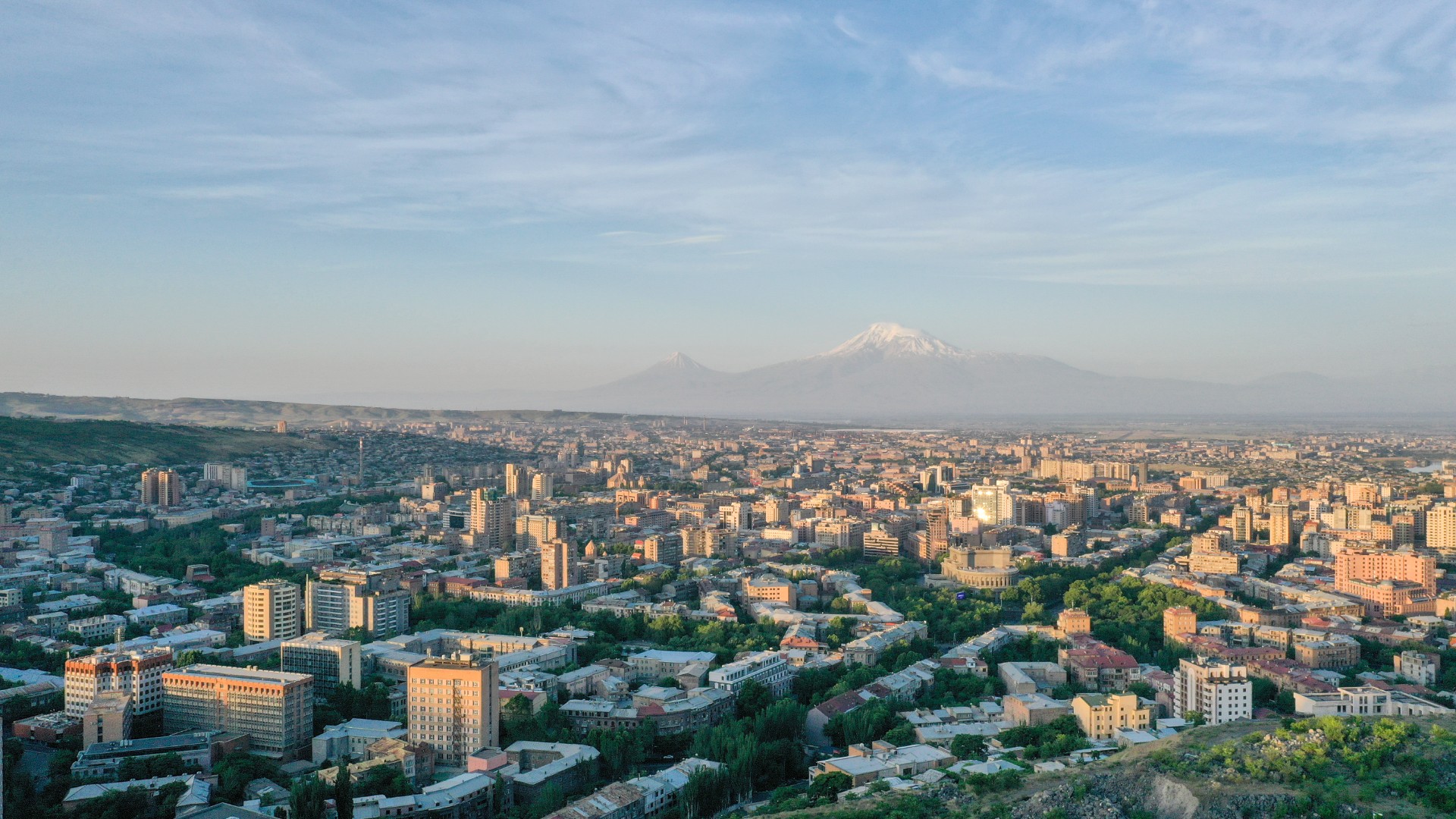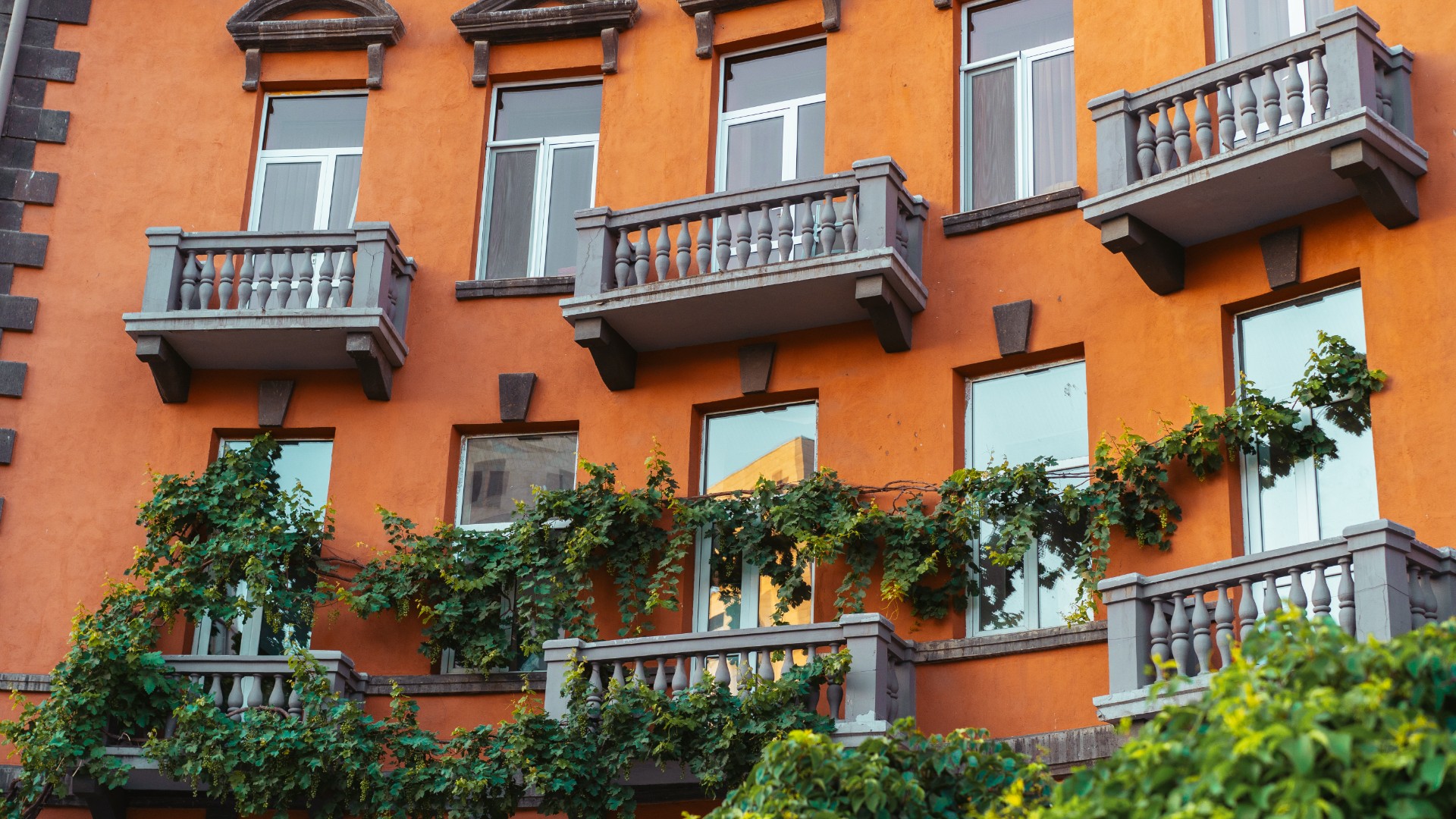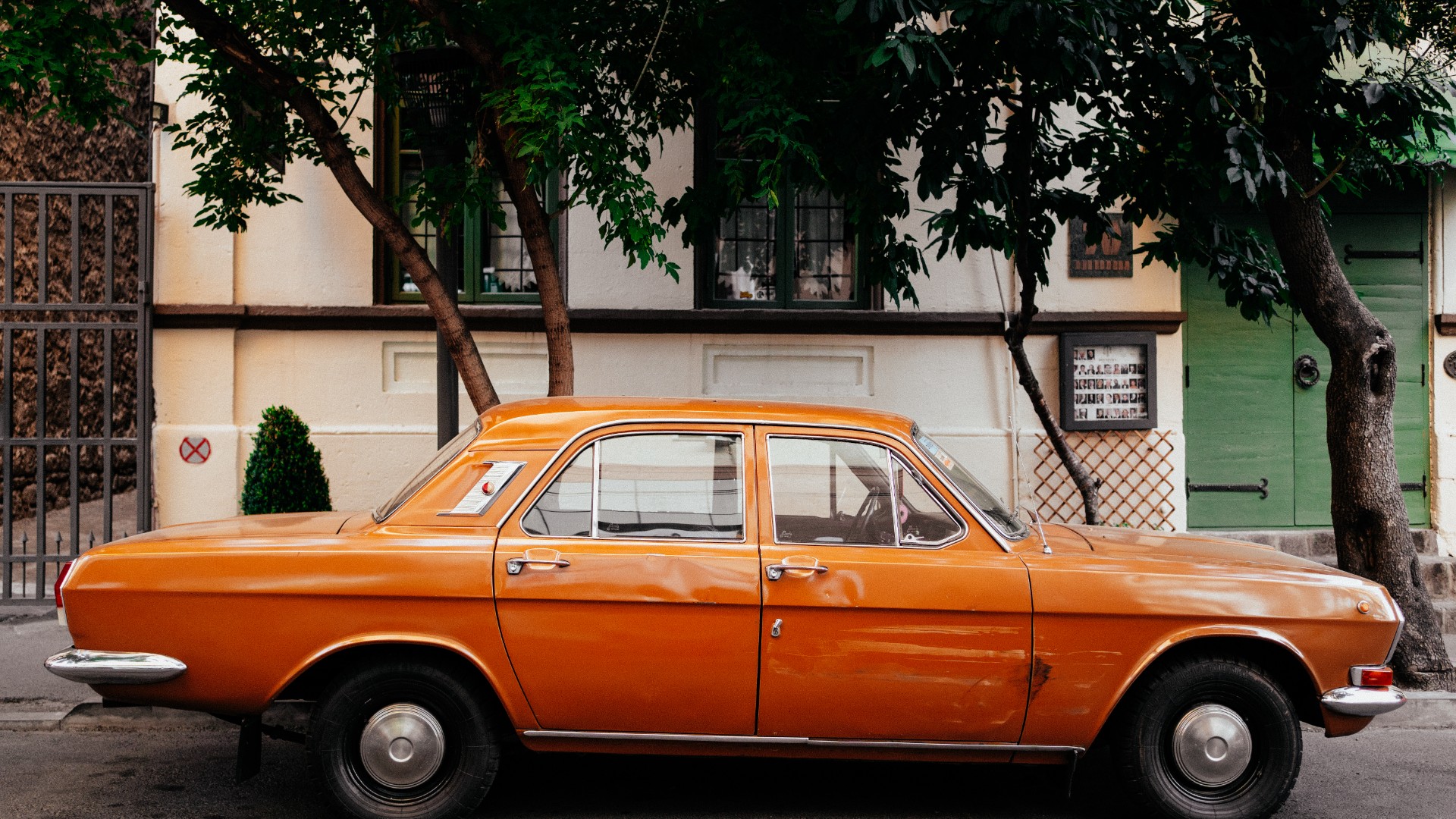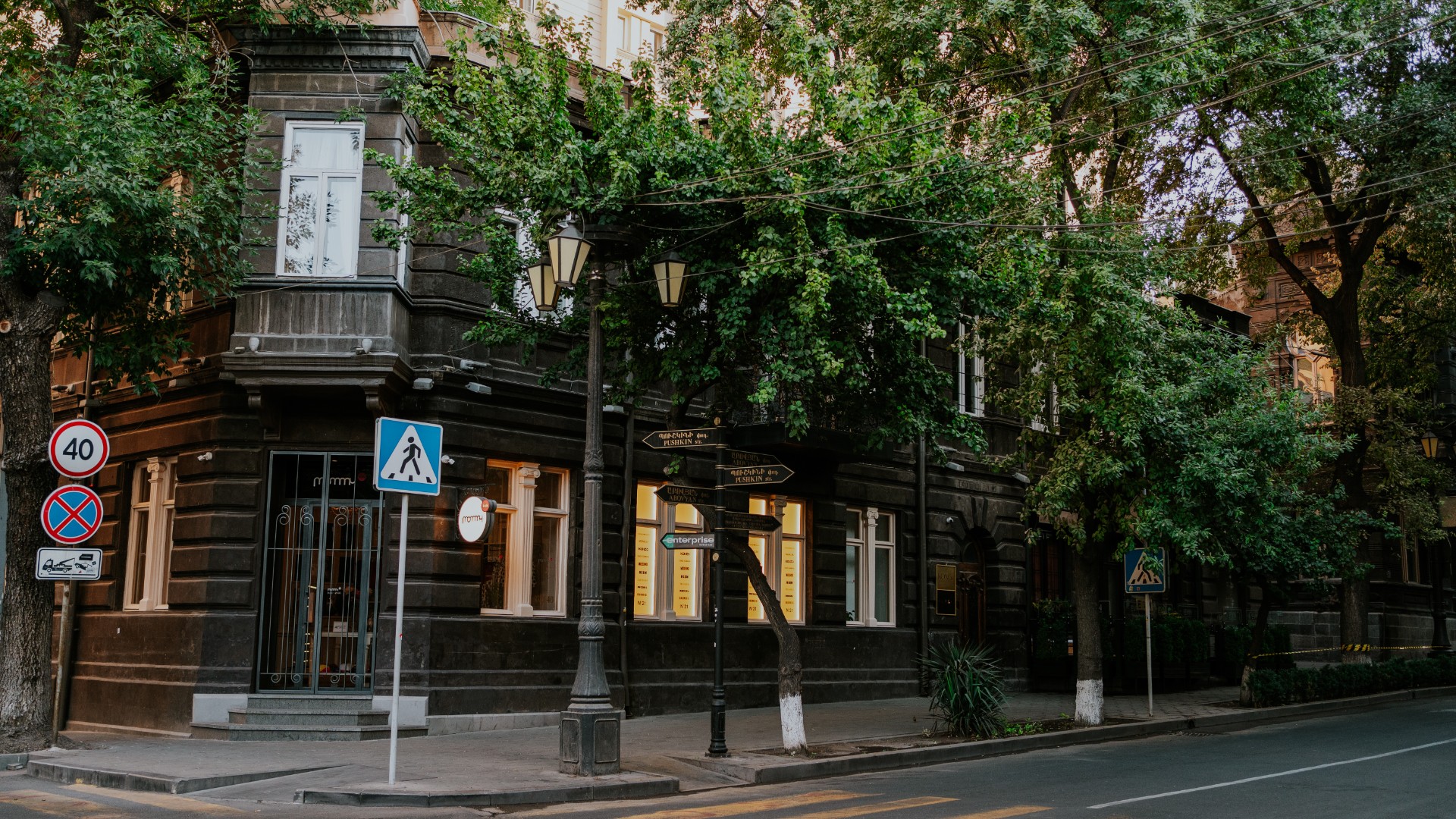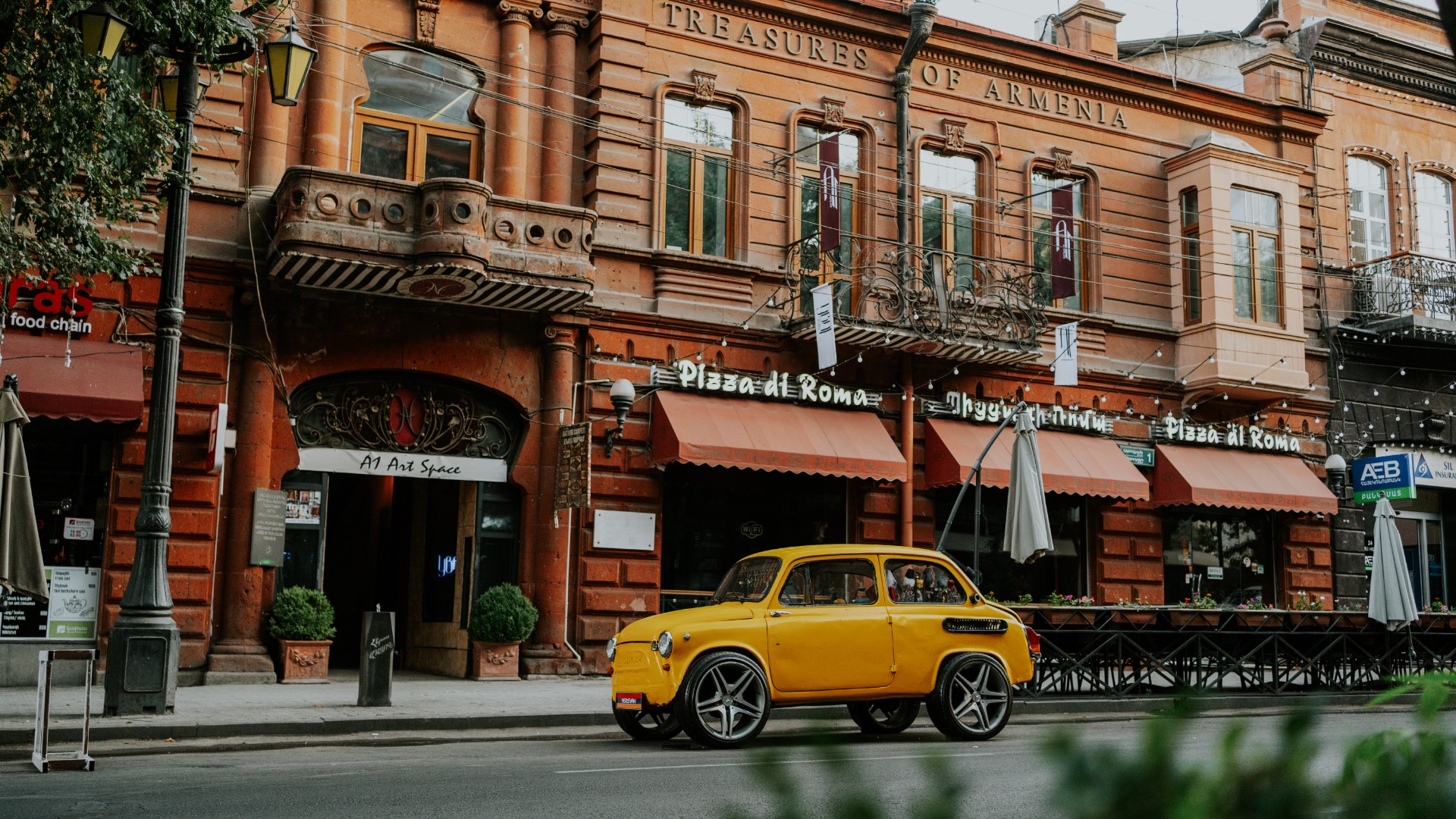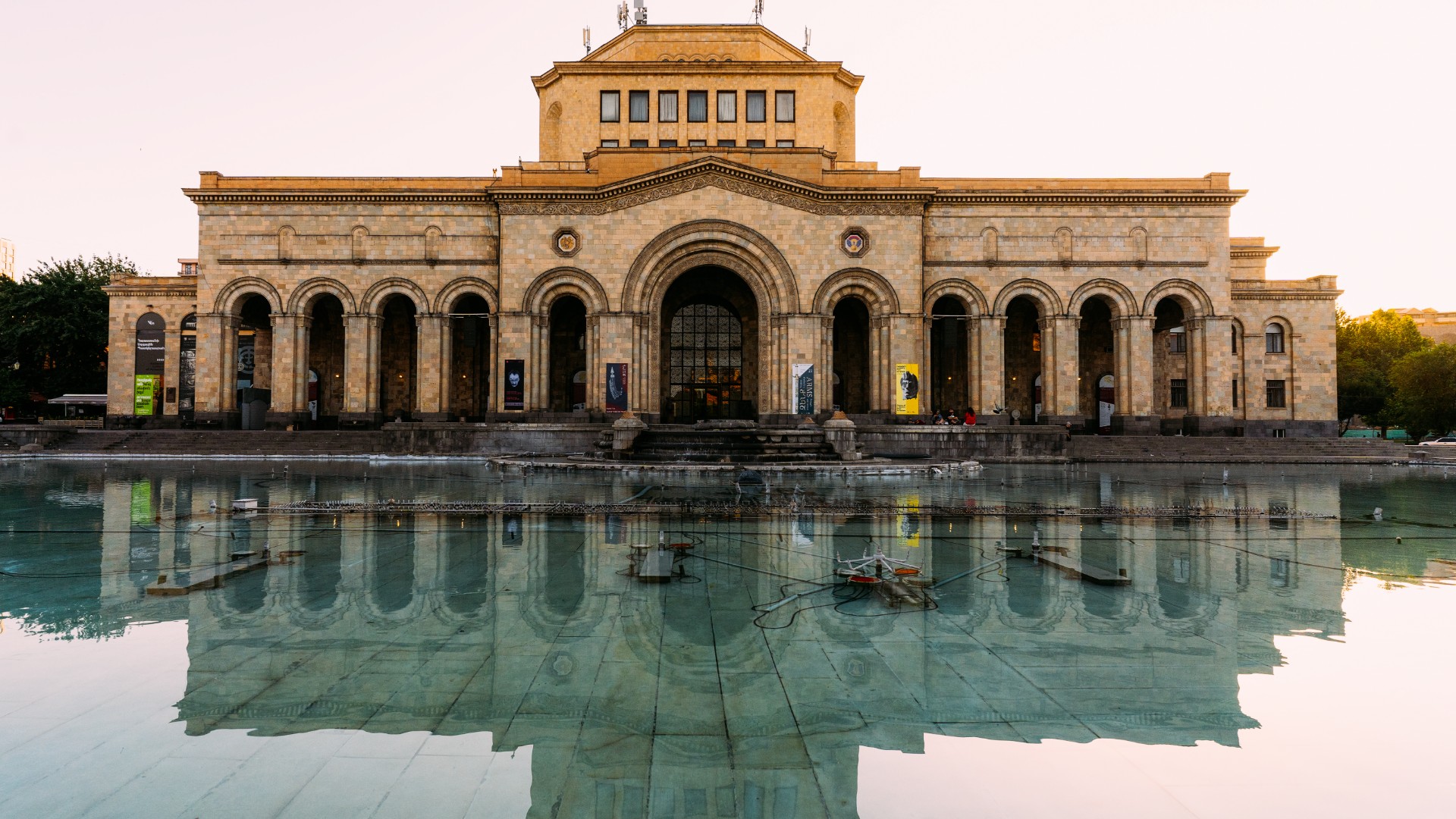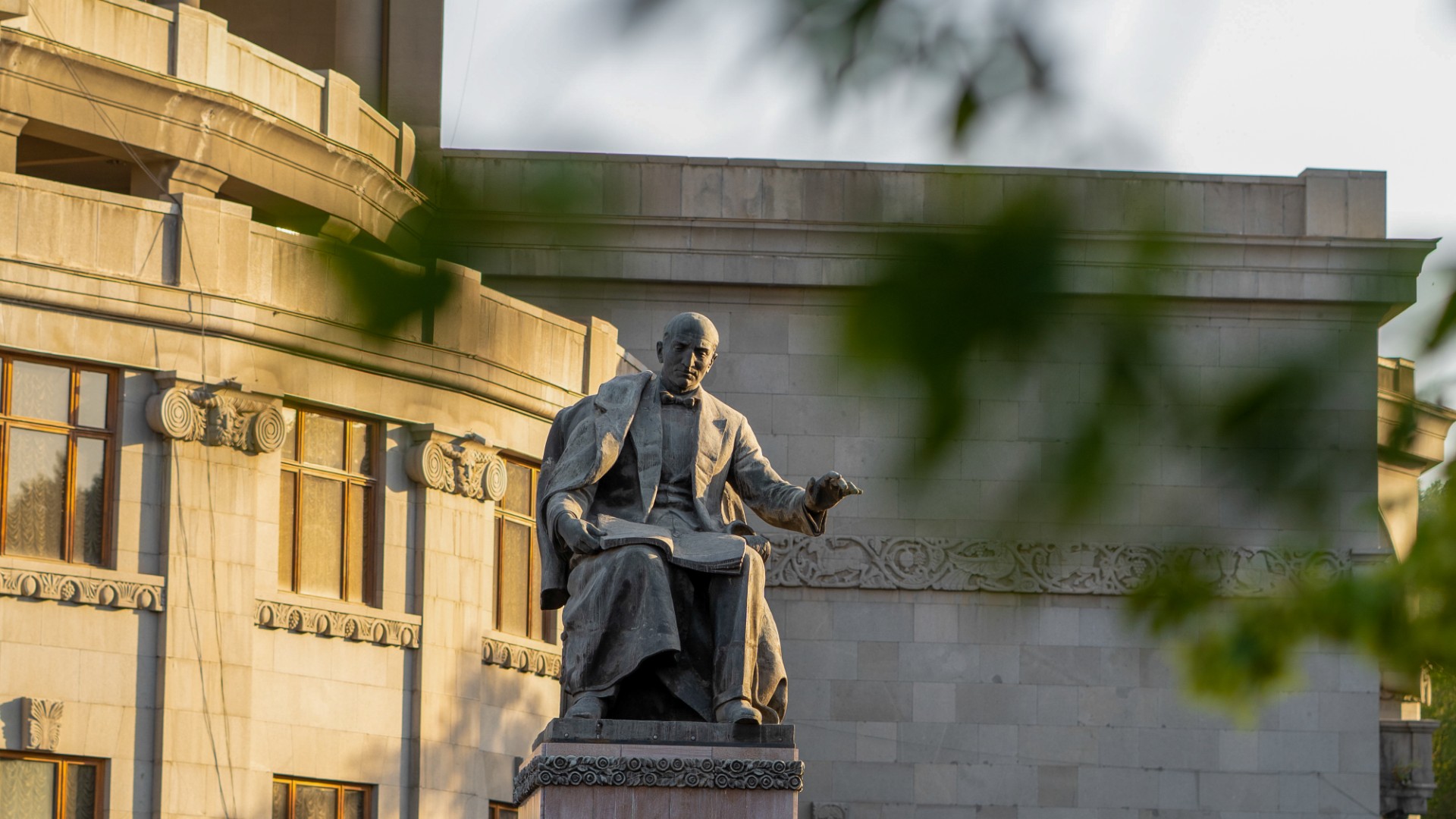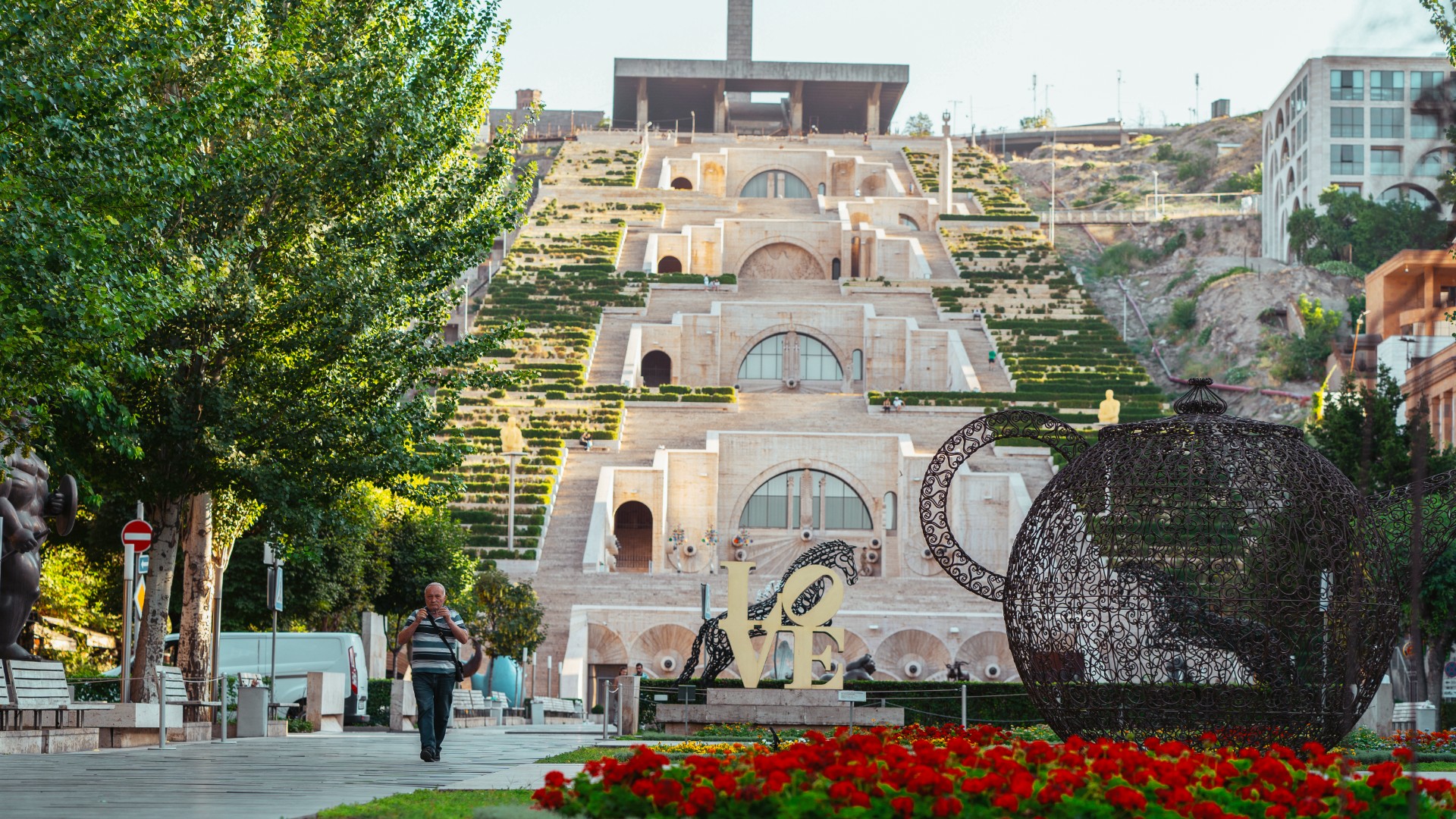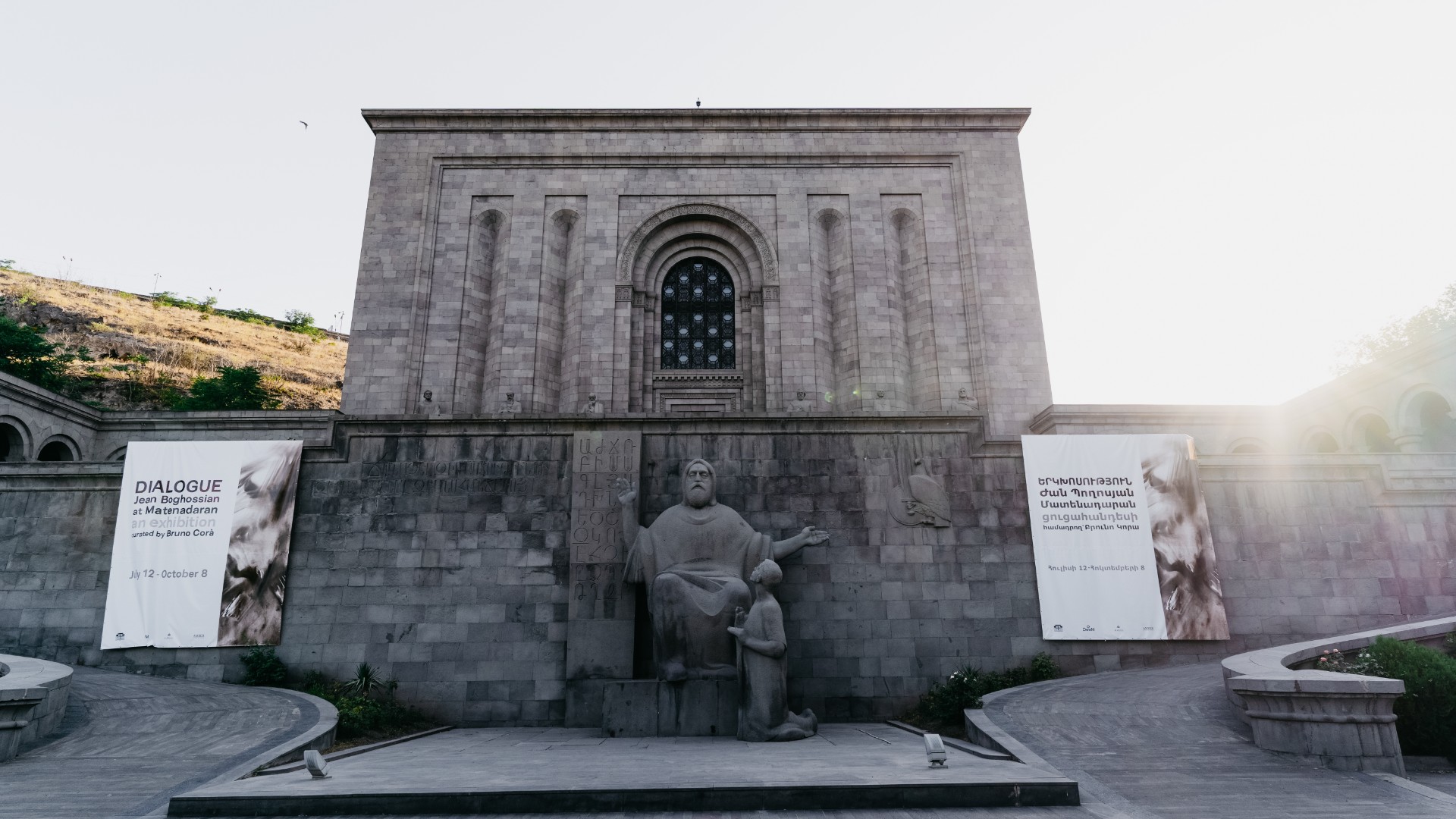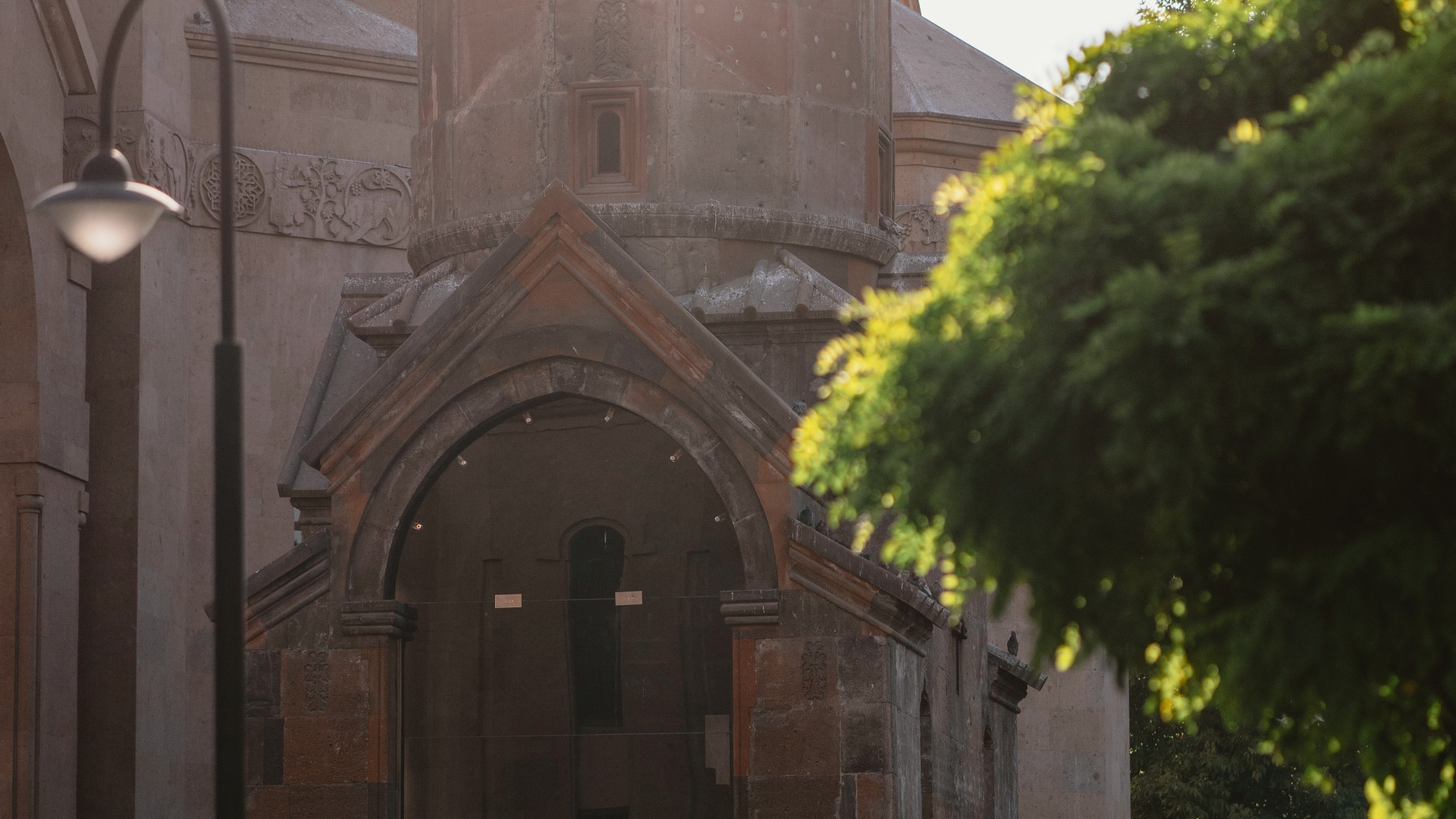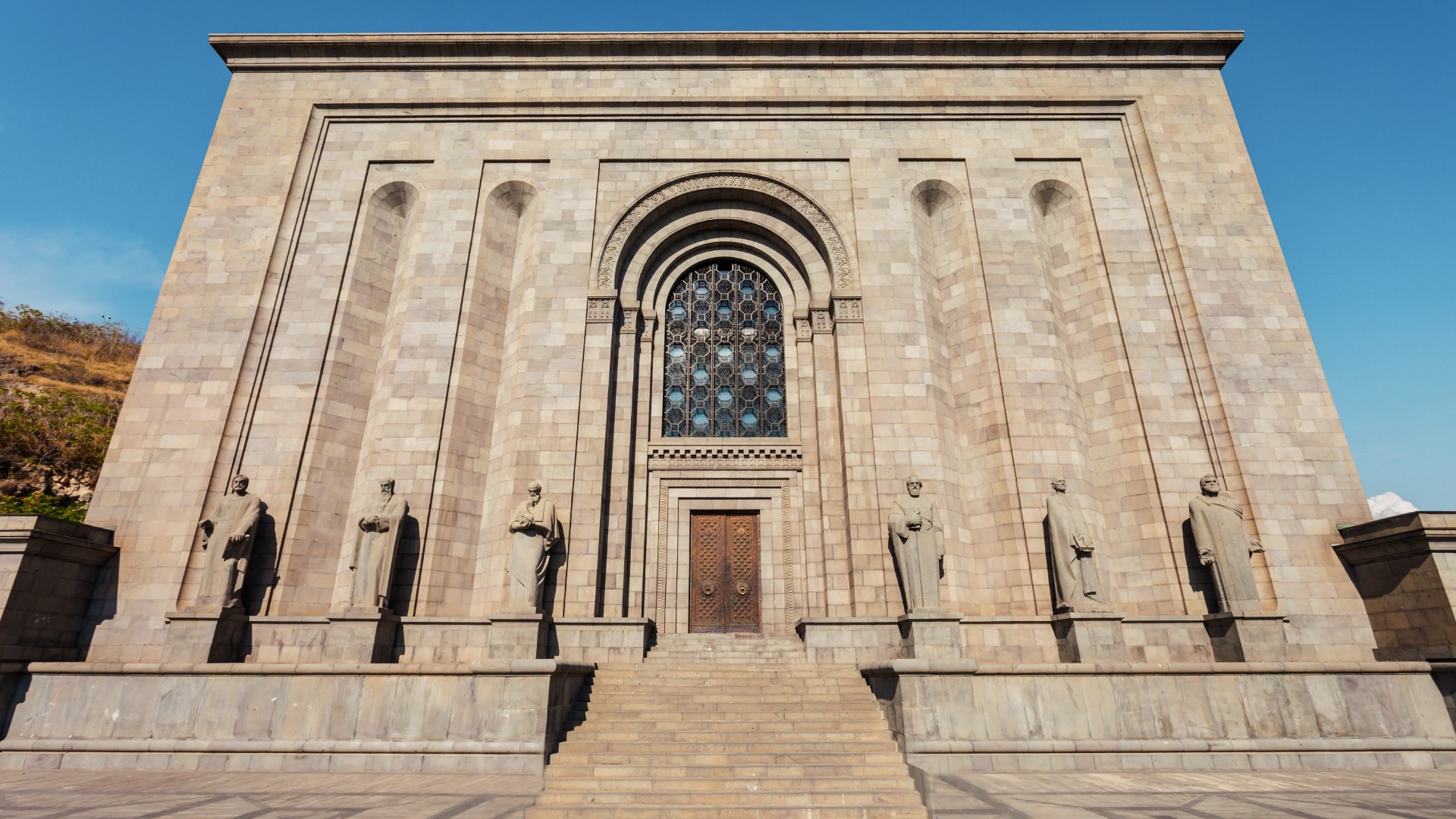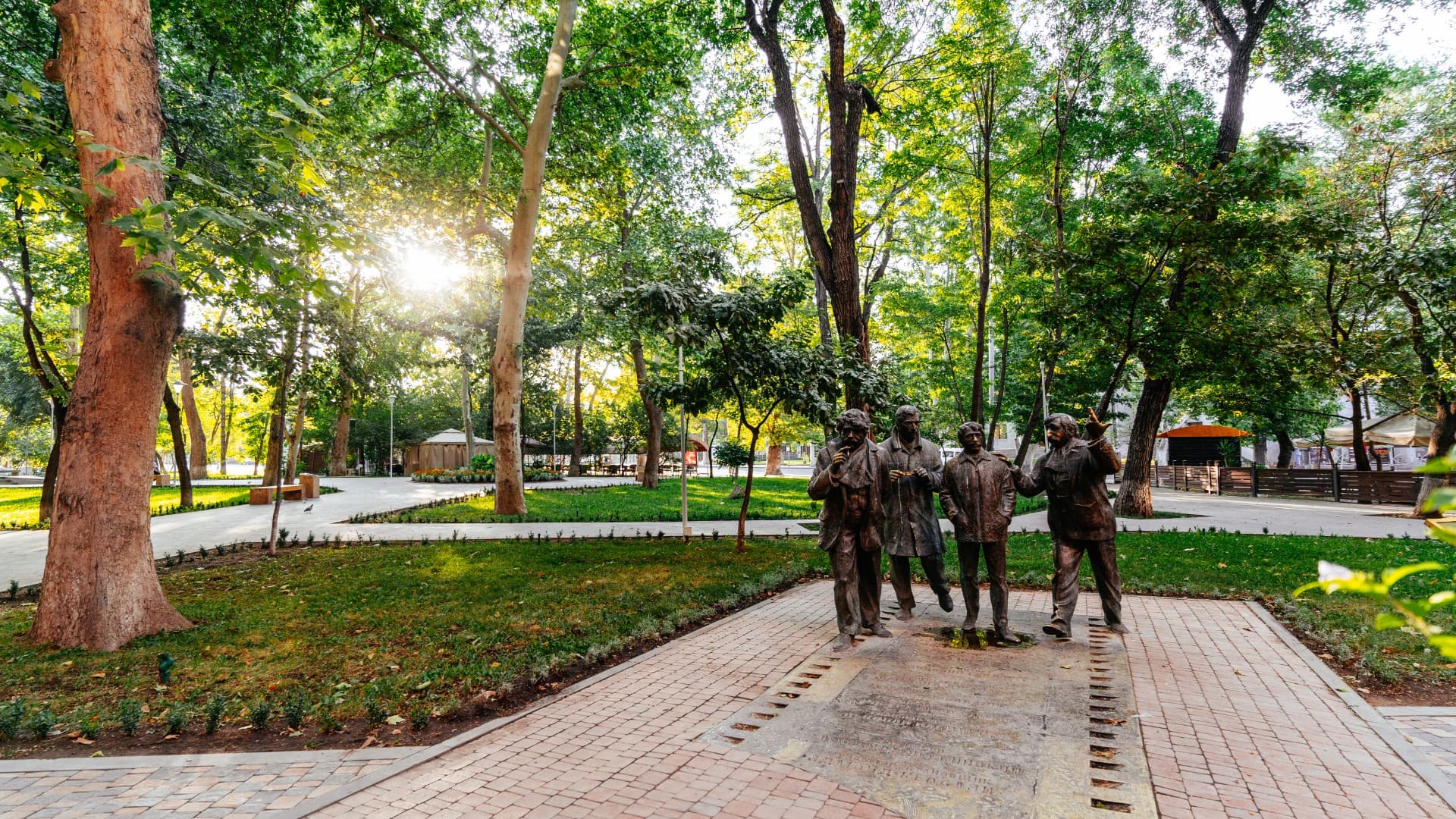Yerevan
Weather and climate
Yerevan is ancient history, graceful architecture, abundance of delicious food, and hospitality of the locals. Historical and old on one hand, modern on the other, Yerevan is the perfect place for a lively vacation with unique undertones.
The city wins you over with the charm of its streets and the coziness of its atmosphere. Here, you begin your day slowly, with a cup of coffee in a stylish coffee shop, then you find inspiration in art, while hiding from the scorching sun at any of the many museums. For lunch, you discover new tastes, and after sunset, you watch the city become alive with movement and people and bars grow full of customers.
The history of Yerevan
Yerevan was founded 2,804 years ago, and as you can imagine, this long history has been extremely eventful. It all began when Argishti I, a king of the ancient kingdom of Urartu, built a fortress on the Arin-Berd hill and named it Erebuni. Gradually, a city emerged around the fortress and took on the same name. Thanks to the stones bearing Urartian cuneiform writing, we know the exact date of the foundation of Erebuni – 782 BC, that is, 29 years before the foundation of Rome.
Trouble came in the 7th century and lasted for the next millennium, as invading Arab and Turkish forces, the Ottoman and the Persian empires attacked to seize Erebuni. Over the centuries, the numerous wars wreaked havoc on the city. Hope emerged in 1918, when Yerevan became the capital of the newly pronounced Republic of Armenia (the 12th capital of the Armenian state in the overall history). Six years later, a large-scale reconstruction of the city began by the design of architect Alexander Tamanian.
He is the author of modern Yerevan’s unique image. In Tamanian’s design, the classic style dominates and is combined with ancient Armenian elements such as ornaments and carvings on the stone. Most buildings are built from pink and red volcanic tuff, which is why both locals and tourists often call Yerevan “the pink city”.
Yerevan today
Over a million people live in Yerevan – that’s over one-third of Armenia’s entire population.
There are a multitude of banks, schools, and universities. The IT sector is growing rapidly, and so does tourism. International hotel chains stand next to no less popular authentic hotels, creating diverse choices for the guests. The particular charm of Yerevan is found in its many cafes and restaurants. Tourists joke that no one can leave Yerevan weighing as much as they did upon arrival at the Zvartnots Airport: the food is just too good.
Yerevan is also a city of holidays. A huge number of events are held every year. The most noteworthy ones are the large-scale Wine Days Festival, the Golden Apricot Film Festival, and the Starmus Festival of Science and Art among others.
The sights
Republic Square
Start your visit to Yerevan from the Republic Square. It is an iconic place, the heart of the nation. The square is surrounded by 5 magnificent buildings that host state institutions. A curious part of the place is the singing fountains, which start the show every day at 9 p.m.
Cascade
The second most popular sight is the open-air art museum, at the foot of which stands a garden with sculptures and modern art pieces. Get ready to climb 572 steps up to the highest viewpoint if you’d like to get a stunning view on the capital and Mount Ararat. If the number of steps isn’t inspiring, you can use the escalators inside. On the way, you will see many curious exhibits.
Opera and Ballet Theater
This original building hosts a theater and a philharmonic orchestra. They play classical pieces as well as stage plays and organize concerts that introduce Armenian culture. The Opera and Ballet Theater holds contests and festivals of classical music every year. A point of particular pride is the Armenian National Philharmonic Orchestra, which enjoys international recognition.
Tsitsernakaberd
The Tsitsernakaberd Memorial Complex (“tsitsernakaberd” translates from Armenian as “fortress of swallows”) pierces the soul with its scale and grief. This monument was erected to honor the victims of the Armenian Genocide. Next to the memorial itself stands the Armenian Genocide Museum-Institute, which holds thousands of materials and archive documents – the evidence of the Genocide.
Kond
Despite its impressive age, Yerevan does not have many old structures – they simply did not survive centuries of warfare. However, you can find some old areas in the Kond district. It is a historical district, built in the 17th century, featuring narrow streets and slums. Apart from the majority, Armenians, other ethnic groups inhabited Kond, such as Persians, Turks. That is why the walls of some buildings are characteristically Armenian, while others bear bright Persian motives.
Abovyan Street
The Abovyan Street is the first street constructed in modern Yerevan and the one that reflects the city’s spirit the most. It used to host people who played an important role in the history of Yerevan, and now the surviving houses (many of which were revenue houses) represent the architecture of the 19th and early 20th centuries.
Churches
Yerevan has several old churches, built from tuff. Those of particular beauty are the Zoravor Surp Astvatsatsin Church and the St John the Baptist Church in Kond, built in the 16th-17th centuries, as well as the Katoghike Holy Mother of God Church, built in the 13th century.
Vernissage
Vernissage is a souvenir and antiques market, where you can choose a memorable gift: jewelry boxes carved as pomegranates, bags with Armenian ornaments, backgammon sets, and an ocean of silver jewelry with ethnic motives, made by local jewelers.
Parks
Yerevan is proud of its many parks, where you can have fun with your children or just chill on the grass, under the trees.
The oldest park is the English Park, opened in the 19th century and as popular as ever. The small Lovers’ Park in the Japanese style is very suitable for couples and families alike, plus, you can get free Wi-Fi and buy a cup of hot coffee there. In the Victory Park, you will see the Mother Armenia monument, and the Tumanyan Park attracts visitors with its fountains, abundance of benches, arbors, trees, and flowers. Among the residents of Yerevan this park is also known as the TUMO park, because the TUMO Center for Creative Technologies stands across it. From there, you can walk down to the gorge of River Hrazdan.
The cultural aspect
Yerevan is a source of inspiration for all those eager to become immersed in art. The city has a plenty of museums, galleries, and theaters to choose from, from classical art to modern creations.
Here are the must-visit places: History Museum of Armenia, Cafesjian Center for the Arts in the Cascade, Mesrop Mashtots Institute of Ancient Manuscripts (Matenadaran), the museums of iconic Armenian artists Martiros Sarian and Yervand Kochar and no less iconic Armenian writers Hovhannes Tumanyan and Yeghishe Charents. The museum dedicated to famous Armenian director Sergei Parajanov is another popular place. Theater lovers are particularly fond of the Stanislavski Russian Theater of Yerevan. The Karen Demirchyan Arena hosts a variety of concerts and sports events.
The best tastes of Yerevan
Internationally known as an open-air museum, Yerevan is also a gastronomical hub. The city’s streets feature many places to eat, ranging from small, one-person businesses to huge establishments.
The cuisine is delicious, voluminous, and it requires that you focus on both the taste and the aftertaste. Make sure to try various dishes made from greens, such as the zhengialov hats (flat bread with 25 types of greens), Armenian baked goods, pomegranate juice, apricot brandy, and of course, coffee in the Armenian style, which you drink slowly and accompany with long conversations about what has passed and what is ahead.
There was a sending error, try refreshing the page and sending again.
Thanks! The manager will contact you soon.
